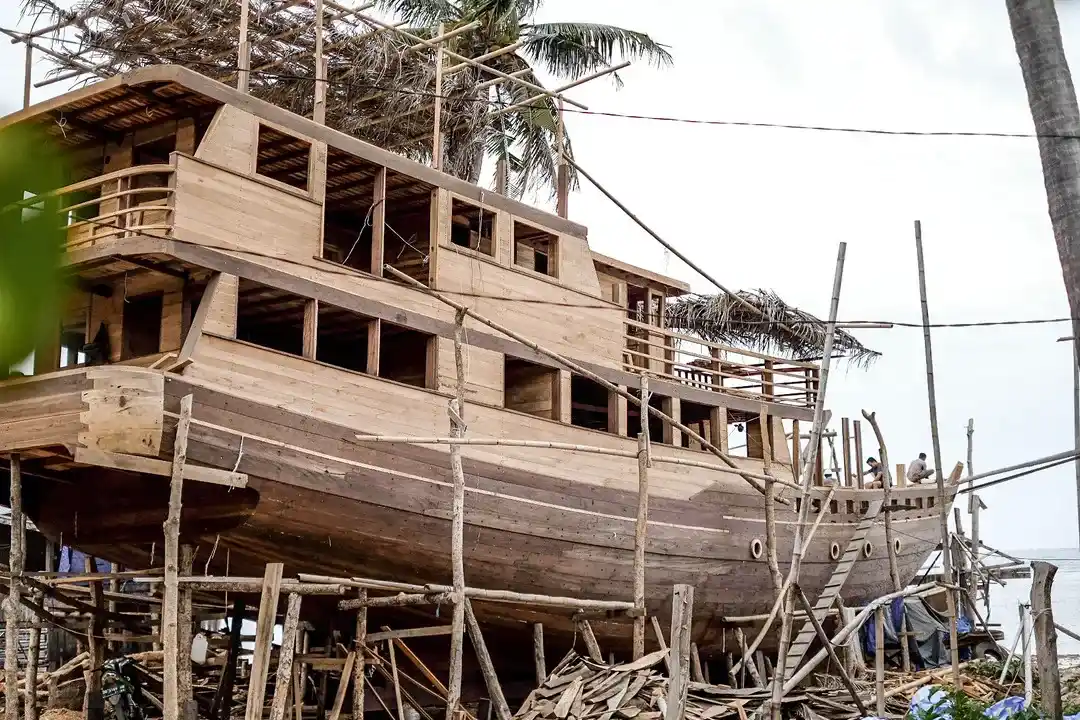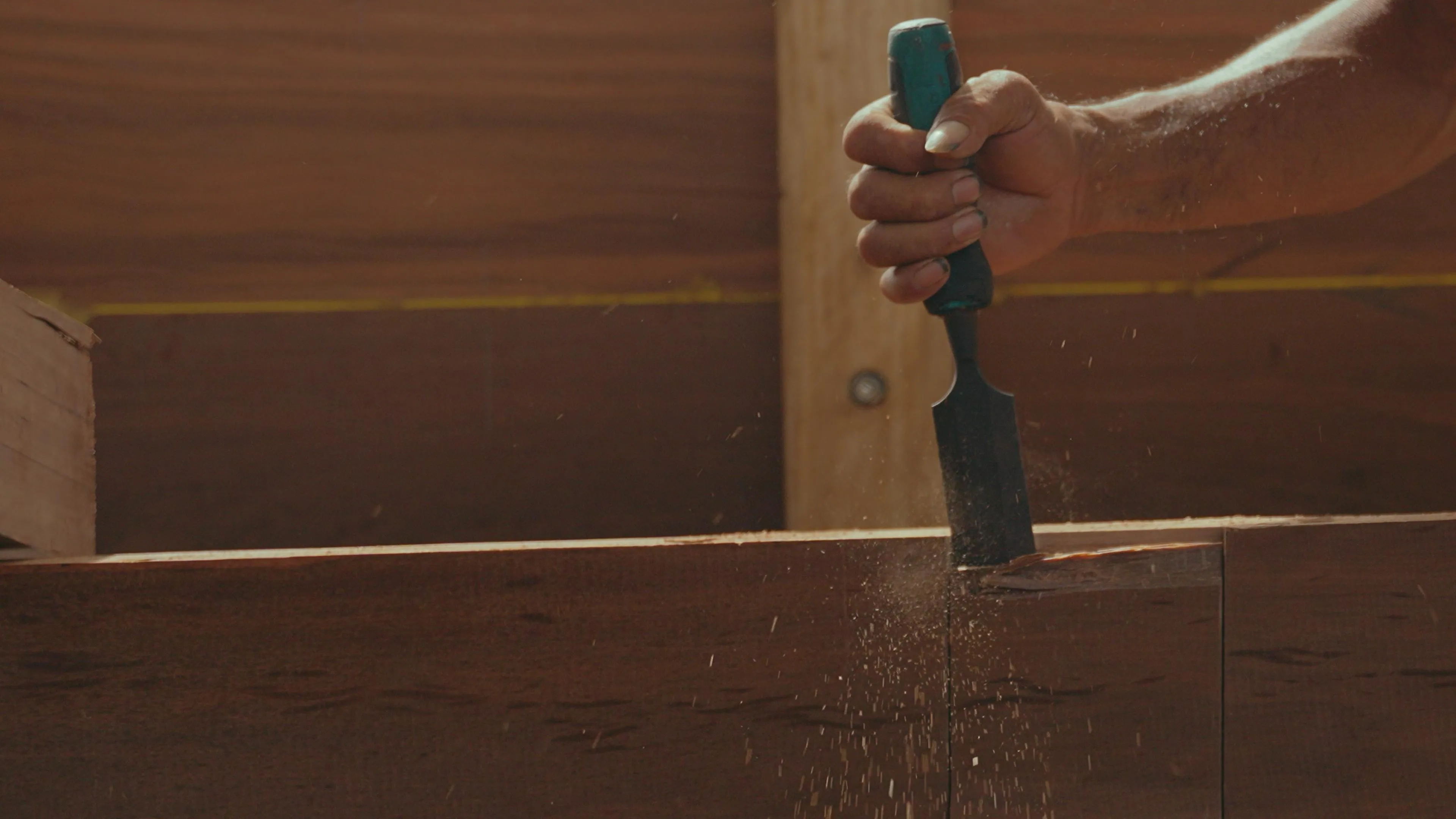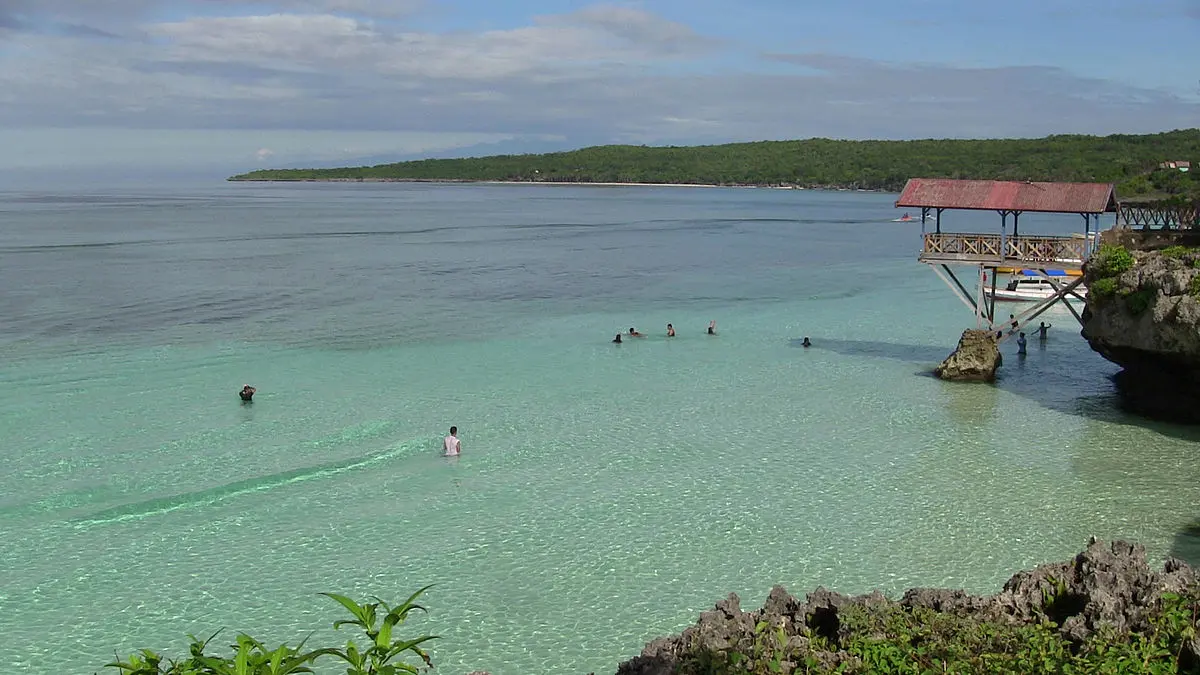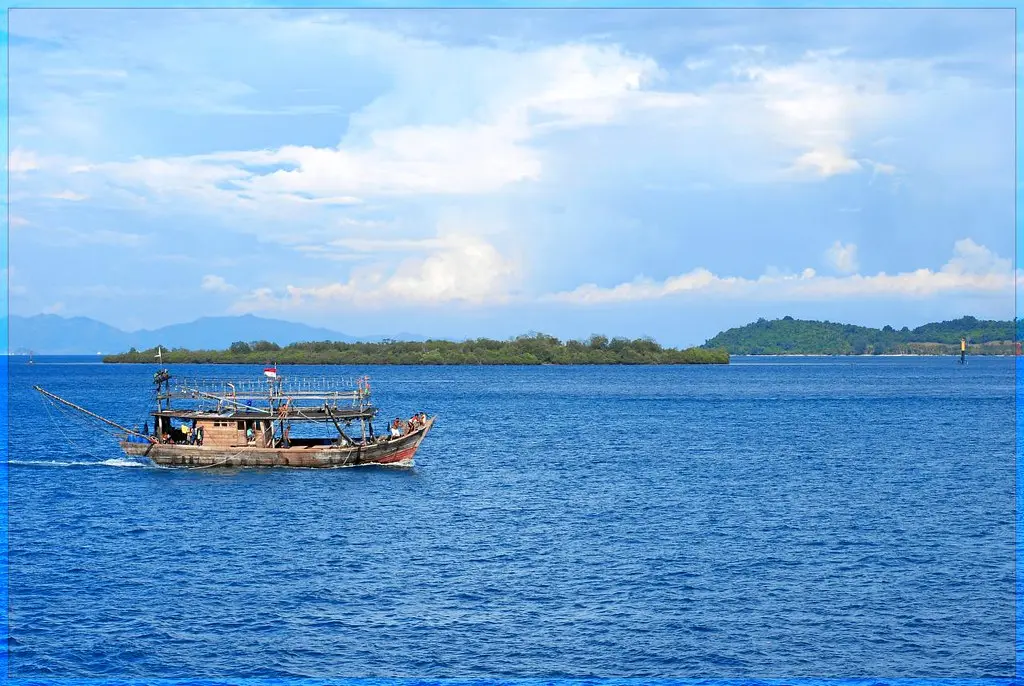Anatomy of a Phinisi Ship: Inside Indonesia’s Iconic Wooden Vessel

Anatomy of a Phinisi ship reveals the deep connection between Indonesian craftsmanship and the sea. More than just a boat, the Phinisi is a cultural icon—handbuilt, sailed for generations, and still alive today. Born in South Sulawesi, this wooden vessel carries stories of trade, tradition, and pride..
Voyagers, before you set sail, let’s explore what makes up this legendary ship—piece by piece.
Anatomy of a Phinisi Ship: Key Parts and Their Purpose
Each part of a Phinisi ship is designed with care, intention, and centuries of seafaring wisdom. From the keel to the sails, every element contributes to both the ship’s strength and its cultural symbolism. Let’s break down the anatomy of a Phinisi ship, one part at a time:
1. Lunas (Keel)
The lunas is the very foundation of the Phinisi—the first piece laid down and the structural backbone of the entire ship.
- Made from durable, rot-resistant woods like ironwood (kayu ulin) to withstand years at sea
- Carefully positioned in traditional ceremonies to bring good luck and guidance
- All other parts are built upon it, aligning the vessel’s balance and direction
Read Also: The Timeless Elegance of the Indonesian Phinisi: Where Heritage Meets Luxury
2. Lambung (Hull)
The lambung, or hull, gives the Phinisi its iconic curved shape—broad and deep, built to carry cargo, people, or supplies.
- Wide-bodied design allows stability and efficiency for long-distance voyages
- Constructed without modern nails—wooden planks are fastened using pegs and rope, an ancient technique passed through generations
- Shaped entirely by hand, using intuitive measurements and shipbuilder experience
3. Tiang (Masts)
The Phinisi features two traditional tiang, or masts: the foremast and mainmast, essential for handling its large sails.
- Usually made from sturdy tropical hardwoods
- Serve as the vertical pillars that anchor the sails and rigging
- Masts are carefully raised during the ship’s final construction stage—a symbolic moment of completion
4. Layar (Sails)
The layar, or sails, are what give the Phinisi its majestic profile and graceful movement across the water.
- Typically made from canvas or cotton, stitched by hand
- Traditional gaff-rigged or triangular designs allow for flexible wind navigation
- The sail layout is one of the Phinisi’s most recognizable features, blending form and function
5. Geladak (Deck)
The geladak, or deck, forms the ship’s usable surface and living space. It is usually divided into two main areas:
- Lower deck: used for crew quarters, cargo storage, and sometimes a kitchen
- Upper deck: houses the steering, navigation area, and in modern Phinisi, often features cabins or relaxation space for guests
- Modern Phinisi adaptations for tourism include shaded lounging areas and dining decks
6. Anjungan (Bridge or Steering Area)
The anjungan is the heart of navigation, where the ship is steered and directed.
- Traditionally equipped with a rudder, compass, and manual steering wheel
- Before modern instruments, navigation relied on the stars, wave patterns, and wind
- Ship captains, known as nakhoda, use this space not only to steer but to command and read the sea
7. Rudder and Anchor Systems
Though simple in appearance, these systems are crucial to the Phinisi’s ability to maneuver and more safely.
- The rudder helps steer the ship, especially important for navigating narrow island passages
- The anchor system, often made from forged metal or stone weights in traditional versions, is adapted for both shallow and deep-water stops
- Functional, reliable, and designed to withstand Indonesia’s varied coastal terrain
Read Also: Best Ways to Get to Komodo Island from Singapore
How a Phinisi Is Built: The Traditional Process
Building a Phinisi is not just a technical task—it’s a sacred tradition rooted in craftsmanship, community, and cultural belief. Each ship is constructed from the keel upward, using time-honored methods that have been passed down through generations.
Here’s how the process unfolds:
1. It Begins with The Lunas (Keel)
The first piece is laid, often in a ceremonial ritual that seeks blessings from the sea and ancestors. The orientation of the keel is believed to guide the ship’s future.
2. Crafted Entirely By Hand
Builders use simple, natural tools—like chisels, mallets, and saws—alongside generational knowledge and intuition. No blueprints or measurements are written down; everything is done by feel, memory, and skill.
3. Fitted Without Nails
Wood planks are secured using wooden pegs and rope bindings, making the ship strong and flexible. The hull is shaped and assembled piece by piece, with master builders leading the process.
4. Built By A Community
Phinisi shipbuilding is a collective effort—involving not just carpenters, but also elders, spiritual leaders, and family members. The process includes rituals and offerings to ensure smooth sailing and spiritual harmony.
5. Centered in Bulukumba
The village of Tana Beru in South Sulawesi is known as the heart of Phinisi shipbuilding. Walking through its coastal shipyards, you’ll see massive wooden vessels rising from sand and sea, surrounded by skilled artisans at work.
Why Phinisi's Design Still Matters Today?
The Phinisi isn’t just a relic of the past—it’s a vessel that continues to shape Indonesia’s future, both culturally and economically. Its design remains relevant today for several important reasons:
1. A Symbol of Cultural Pride
For the Bugis and Makassarese people of South Sulawesi, the Phinisi represents maritime identity and ancestral honor. Its continued presence affirms a deep-rooted connection to the sea and tradition.
2. Craftsmanship That Inspires
Every Phinisi is handbuilt, showcasing artisanal skill and sustainability. Using local materials and time-tested methods, each ship reflects values of careful design and respect for nature—something modern shipbuilding often lacks.
3. Still Sailing with Purpose
Today, many Phinisi ships are used for eco-sailing tours, liveaboard diving trips, and cultural cruises across places like Komodo, Raja Ampat, and Flores. Their strong wooden hulls and wind-powered sails make them ideal for sustainable tourism.
4. Resilience in Modern Times
While modern boats rely on engines and factories, the Phinisi endures through community-based knowledge. This resilience keeps intangible cultural heritage alive and meaningful in a changing world.
Read Also: The History of Phinisi: World-Class Cultural Heritage of Bulukumba
Where to See or Experience a Phinisi Today?
Whether you're an adventurer, culture-seeker, or history lover, there are many ways to encounter the Phinisi—not just as a display, but as a living, breathing part of Indonesia’s maritime story.
1. Sail Aboard A Modern Phinisi
In destinations like Komodo, Raja Ampat, and Flores, Phinisi ships have been adapted into stunning liveaboard vessels. These eco-friendly cruises offer a blend of luxury and tradition, perfect for diving trips or cultural journeys across Indonesia’s eastern islands.
2. Explore Museums and Maritime Exhibitions
For a closer look at Phinisi models and historical context, visit the Bahari Museum in Jakarta or the Fort Rotterdam Maritime Museum in Makassar. These spaces offer curated insight into the ship’s origins and legacy.
3. Visit The Heart of Phinisi building in Tana Beru
Located in Bulukumba, South Sulawesi, Tana Beru is the most iconic Phinisi shipyard in the country. Here, you’ll see towering wooden ships under construction right by the beach—crafted by skilled hands using traditional methods passed down through generations.
4. Join Riara Marine’s Shipyard Workshop
For a hands-on, immersive experience, Riara Marine invites Voyagers to step into the craft themselves. Learn from master builders, try shaping wood or tying sailing knots, and witness the cultural rituals that make Phinisi shipbuilding so unique.
Experience the Soul of the Phinisi Firsthand with Riara Marine
Step beyond sightseeing—experience the anatomy of a Phinisi ship firsthand with Riara Marine’s shipbuilding workshop in Bulukumba. This immersive, hands-on experience invites Voyagers to:
- Learn directly from master shipbuilders who preserve centuries of maritime tradition
- Try wood shaping, rope crafting, or practicing classic sailing knots
- Witness the rituals and cultural practices that bring each Phinisi to life
Book your spot now and become part of Indonesia’s living maritime legacy.




